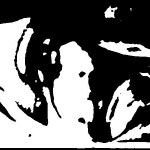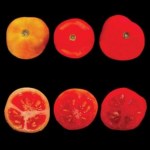genes
The presumption being examined here is that humans are divisible into different groups (races would be one term for those groups) that are genetically distinct from one another in a way that causes those groups to have group level differences in average intelligence, as measured by IQ. More exactly, this post is about the sequence of arguments that are usually made when people try to make this assertion.
The argument usually starts out noting that there are dozens of papers that document group differences in IQ. I'll point out right now that most of those papers are published in journals with…
Today's Weizmann Institute news stories include two new papers from the prolific lab of Prof. Yadin Dudai. The first is on a protein that boosts memory in rats. Dudai and his group have been investigating this protein for several years. Previously, they had managed to show that blocking the protein, even for a very short time, erases memories. Now, they have demonstrated that adding more of the protein to certain areas of the brain can strengthen memory. Note: They increased the protein via gene-carrying viruses that infiltrated the rats' brain cells - not a clinic-ready technique. But until…
Three news items were posted on our site today. The first is on two papers by a group in Spain. Normally we don't publicize papers that are not written by Institute scientists, but these are a special case. They appear to have clinched the claims of a Weizmann scientist that one can treat stroke and head trauma without trying to get drugs into the brain. The treatment would consist of upping the levels of a naturally-occurring enzyme in the blood; one of these papers showed that levels of this enzyme in the blood tests of stroke patients were the best predictor of their chances of recovery.…
This week, two press releases from the Institute:
The first was on the sequencing of the woodland strawberry genome (unfortunately, in the same week the cacao genome was sequenced). The Institute scientists who participated in the project contributed in the computational analysis of genes encoding flavor- and aroma-related proteins.
This wild cousin of the cultivated strawberry is a member of the rose family, along with fruit trees including apples, peaches, cherries and almonds. In other words, this small annual plant is sure to become a useful experimental model for plant and agricultural…
Feel the need to eat chocolate when under pressure? You might be able to blame it on your genes, specifically a gene in the brain that responds to stress. This gene, when active, brings out your anxiety and as well as bringing about metabolic changes that tell your body to burn sugar, rather than fat. The same metabolic changes reduce insulin sensitivity in muscles, raising sugar levels in the blood, and causing the pancreas to churn out more insulin. According to the Institute scientists who revealed the gene's function, if the constant stress of daily life keeps this gene overworked, the…
When you look over the assortment of sizes, shapes and colors of tomatoes displayed in the market, do you stop to consider the time and effort that went into developing them (more than ten years to create a new commercial cultivar)? But a variety of sweet, pink-skinned tomato that's popular in the Far East could speed-up the breeding of new cultivars in this region. In the search for the mutation that gives these tomatoes their pink hue, Weizmann scientists discovered a "master" gene that regulates the levels of hundreds of tomato metabolites. That gene, say the scientists, might be used as a…
After I wrote in my Atlantic article about getting my serotonin transporter gene assayed (which revealed that I carry that gene's apparently more plastic short-short form), I started getting a lot of email â several a week â from readers asking how to have their SERT gene tested. This led to an interesting hunt.
It was a hard question to answer. I couldn't just tell people to do what I did, for a psychiatric researcher/MD I'd known for years, who specializes in depression and serotonin, had done mine as a sort of favor to science and journalism. That researcher also stood by, had I needed…
Double helix, courtesy NIH/National Genome Research Institute
It's the 10th anniverary of the coding of the human genome. Snuck up on me -- but not on Nature or Reuters. Both of these outfits â two of the best science/med reporting teams out there â published big, beautiful, multipart packages today. They're worth a look even if you're not a genome geek.
Reuters looks at what NIH director and former director of the National Human Genome Research Institute Francis Collins found when he finally had his genome run last summer: a disposition for type-2 diabetes, among other things. Collins was…
Lost of discussion about Basques below. Some interesting examples which are less speculative.
Hungary = Language changes, genes do not
The intrusion of ethnic Magyars, and later the settlement of Kipchak Turks fleeing the Mongols, within Hungary is historically attested. Additionally, down to the Reformation there were isolated settlements of Turks among the Magyars which maintained their own linguistic tradition. But digging through the literature it is very difficult to find much genetic impact. Anatolian Turks are a milder case; eastern genetic contributions can be found, but it is the…
At first glance, the African elephant doesn't look like it has much in common with us humans. We support around 70-80 kg of weight on two legs, while it carries around four to six tonnes on four. We grasp objects with opposable thumbs, while it uses its trunk. We need axes and chainsaws to knock down a tree, but it can just use its head. Yet among these differences, there is common ground. We're both long-lived animals with rich social lives. And we have very, very large brains (well, mostly).
But all that intelligence doesn't come cheaply. Large brains are gas-guzzling organs and they need…
The autism spectrum disorders (ASDs), including autism and its milder cousin Asperger syndrome, affect about 1 in 150 American children. There's a lot of evidence that these conditions have a strong genetic basis. For example, identical twins who share the same DNA are much more likely to both develop similar autistic disorders than non-identical twins, who only share half their DNA.
But the hunt for mutations that predispose people to autism has been long and fraught. By looking at families with a history of ASDs, geneticists have catalogued hundreds of genetic variants that are linked to…
Be it in sports or comedy, they say that timing is everything. In evolution, it's no different. Many of the innovations that have separated us from other apes may have arisen not through creating new genetic material, but by subtly shifting how the existing lot is used.
Take our brains, for example. In the brains of humans, chimps and many other mammals, the genes that are switched on in the brain change dramatically in the first few years of life. But Mehmet Somel from the Max Planck Institute for Evolutionary Anthropology has found that a small but select squad of genes, involved in the…
What do the missing Romanov children, genetically engineered humans, financial risk taking, and poop have in common?
You can read about all these topics from this month's Gene Genie carnival at Mary Meets Dolly.
Who would have thought that mutations could be so much fun?
The trauma of child abuse can last a lifetime, leading to a higher risk of anxiety, depression and suicide further down the line. This link seems obvious, but a group of Canadian scientists have found that it has a genetic basis.
By studying the brains of suicide victims, Patrick McGowan from the Douglas Mental Health University Institute, found that child abuse modifies a gene called NR3C1 that affects a person's ability to deal with stress. The changes it wrought were "epigenetic", meaning that the gene's DNA sequence wasn't altered but it's structure was modified to make it less active.…
This is the sixth of eight posts on evolutionary research to celebrate Darwin's bicentennial.
Physically, we are incredibly different from our ape cousins but genetically, it's a different story. We famously share more than 98% of our DNA with chimpanzees, our closest living relatives. Our proteins are virtually identical and our chromosomes have more or less the same structure. At the level of the nucleotide (the "letters" that build strands of DNA), little has happened during ape evolution. These letters have been changing at a considerably slower rate than in our relatives than in other…
Solar power is a relatively new development for humans but, of course, many living things have been exploiting the power of the sun for millions of years, through the process of photosynthesis. This ability is usually limited to plants, algae and bacteria, but one unique animal can do it too - the emerald green sea slug Elysia chlorotica. This remarkable creature steals the genes and photosynthetic factories of a type of algae that it eats (Vaucheria littorea), so that it can independently draw energy from the sun. Through genetic thievery, it has become a solar-powered animal and a…
One of the things that drives me crazy on occasion is nomenclature. Well, maybe not just nomenclature, it's really the continual changes in the nomenclature, and the time it takes for those changes to ripple through various databases and get reconciled with other kinds of information. And the realization that sometimes this reconciliation may never happen.
One of the projects that I've been working on during the past couple of years has involved developing educational materials that use bioinformatics tools to look at the isozymes that metabolize alcohol. As part of this project, I've been…
tags: genetics, Bill Nye the Science Guy, education, streaming video
Those of you who do not know who Bill Nye the Science Guy! is will especially enjoy this video. In this streaming episode, Bill Nye the Science Guy explores the science behind genes (part 3). Basically, you can thank your parents for all those nice pairs of genes. Chromosomes are made up of sequences of genes, which are themselves made up of strands of DNA. The mutations in DNA during replication cause resulting changes within genes, which is the basis of evolution. [8:54].
tags: genetics, Bill Nye the Science Guy, education, streaming video
Those of you who do not know who Bill Nye the Science Guy! is will especially enjoy this video. In this streaming episode, Bill Nye the Science Guy explores the science behind genes (part 2). Basically, you can thank your parents for all those nice pairs of genes. Chromosomes are made up of sequences of genes, which are themselves made up of strands of DNA. The mutations in DNA during replication cause resulting changes within genes, which is the basis of evolution. The third and last part appears tomorrow morning. [6:17].
tags: genetics, Bill Nye the Science Guy, education, streaming video
Those of you who do not know who Bill Nye the Science Guy! is will especially enjoy this video. In this streaming episode, Bill Nye the Science Guy explores the science behind genes (part 1). Basically, you can thank your parents for all those nice pairs of genes. Chromosomes are made up of sequences of genes, which are themselves made up of strands of DNA. The mutations in DNA during replication cause resulting changes within genes, which is the basis of evolution. [7:53].

